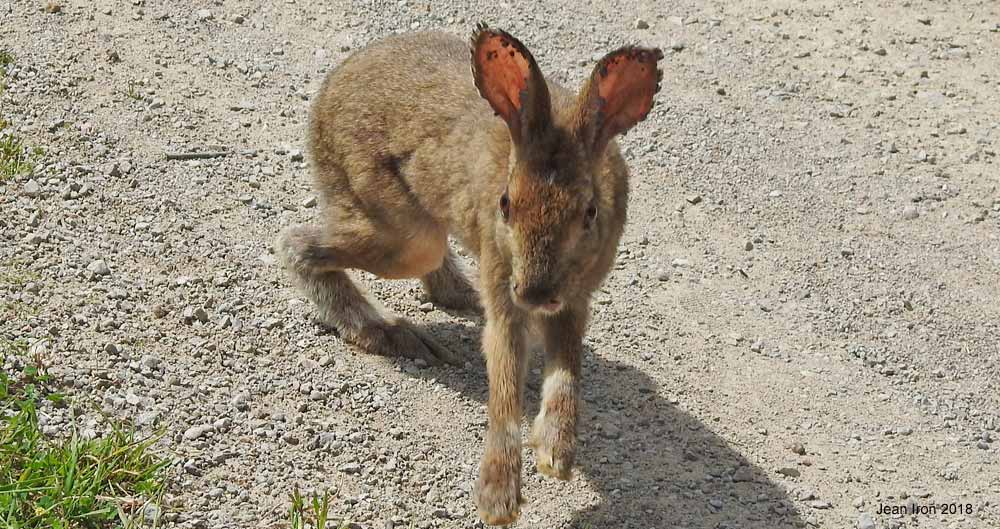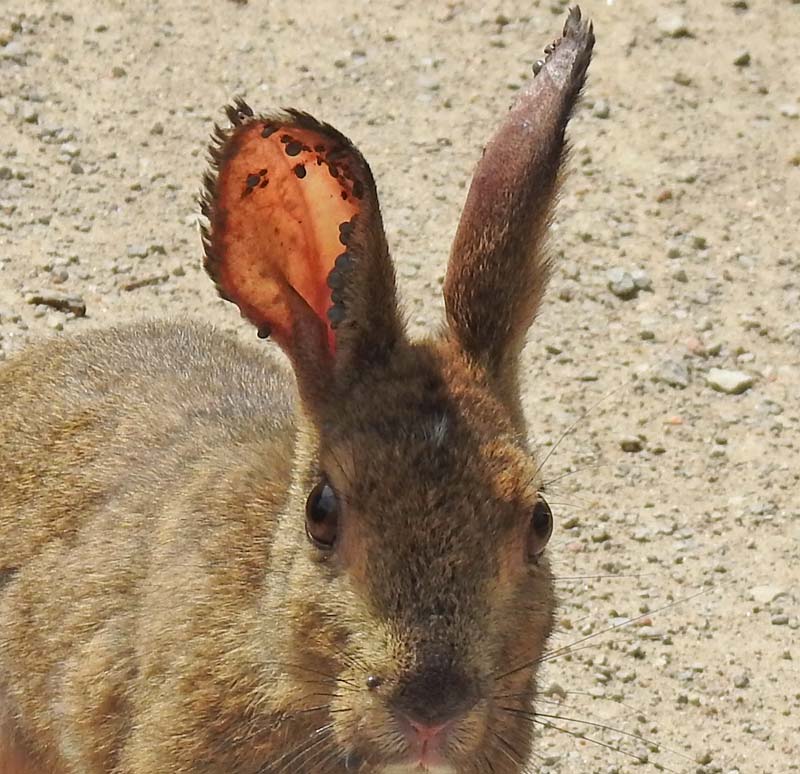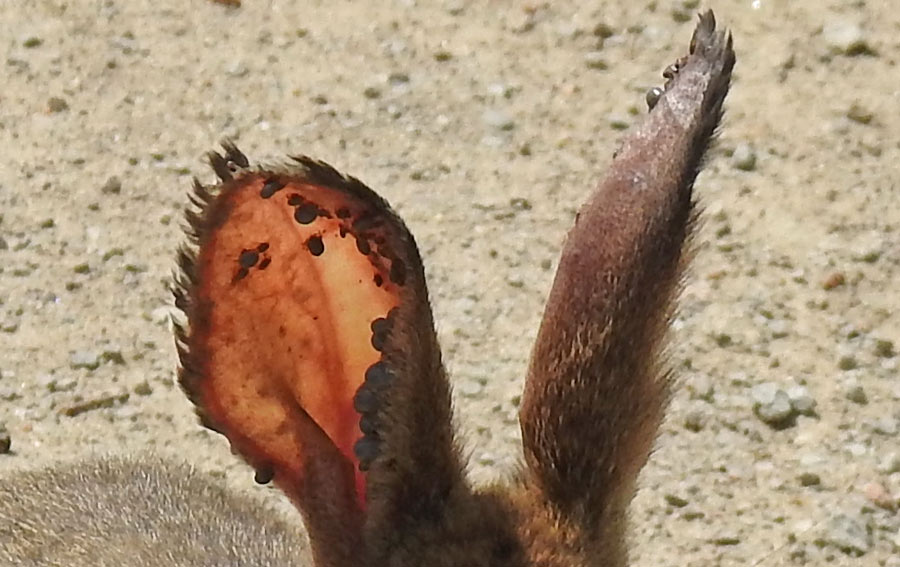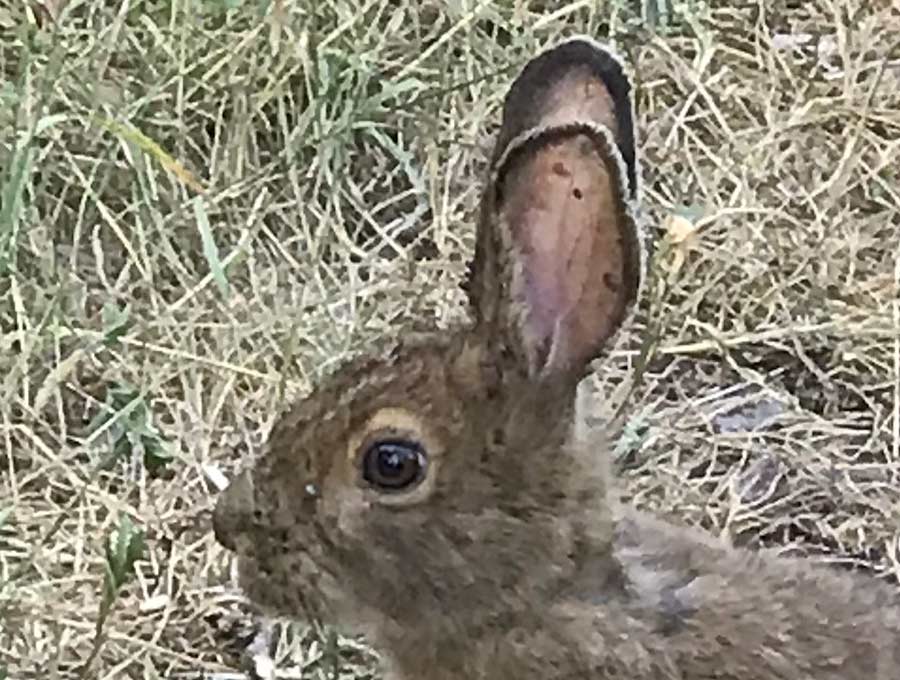|
Snowshoe Hares and Ticks |
|
Carden Alvar on 26 June 2018 |
|
 |
|
Showshoe Hare 1. On Wylie Road,
Carden Alvar, Ron Pittaway and I watched two Snowshoe Hares, one at
the north end of Wylie Road and the other at Sedge Wren Marsh. On
close inspection, both hares were infested with ticks. This tick is
known as the Rabbit Tick Haemaphysalis leporispalustris.
Widespread in North and South America, it has one of the largest
ranges of New World ticks. Its hosts are cottontail rabbits, hares
and sometimes ground-nesting birds. In Ontario it is the only tick
on Snowshoe Hares and European Hares, but it has not been
reported on Eastern Cottontails in the province (Ed Addison personal communication).
|
|
Note: This tick
does not carry Lyme Disease. |
|
|
|
 |
|
Showshoe Hare 1. This individual
with a multitude of Rabbit Ticks in its ears and some on its face
was near the north end of Wylie Road. The scientific name
Haemaphysalis leporispalustris is apt.
Michel Gosselin explained that
haema-physalis means “blood-bladder”,
evidently from the look of the engorged tick, which grows larger
with each moult;
and leporis-palustris means “of the marsh rabbit” from the first specimen having been
collected on a Marsh Rabbit Lepus (now Sylvilagus)
palustris in North Carolina. |
|
|
|
 |
|
Showshoe Hare 1. Both male and female ticks
become engorged. Alberta Fish and Wildlife says this tick is a "benign
critter that is common on snowshoe hares and jackrabbits throughout
the province but causes little or no problem." However, the Alaska
Department of Fish and Wildlife advises care in handling hares with
ticks as these ticks can carry an uncommon bacterial disease called Tularemia, Wylie Road, Carden Alvar on 26 June 2018. |
|
|
|
 |
|
Showshoe Hare 2. Snowshoe Hare 2
at Sedge Wren Marsh also had Rabbit Ticks on its ears and face.
Wylie Road, Carden Alvar on 26 June 2018 |
|
|
|
 |
|
Showshoe Hare 2.
Rabbit Ticks engorged on a Snowshoe Hare on Wylie Road, Carden
Alvar on 26 June 2018. |
|
|
|
|
|
|